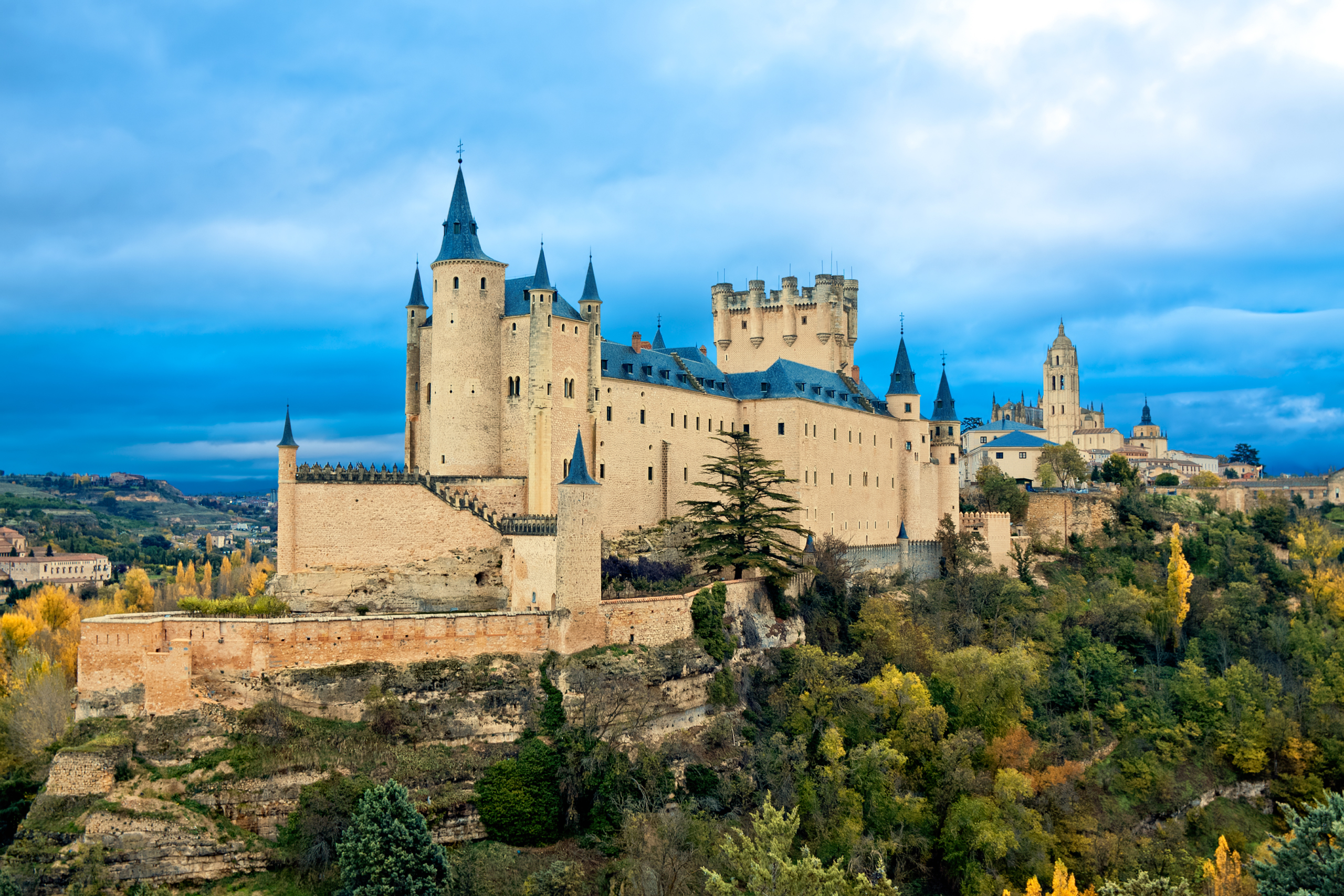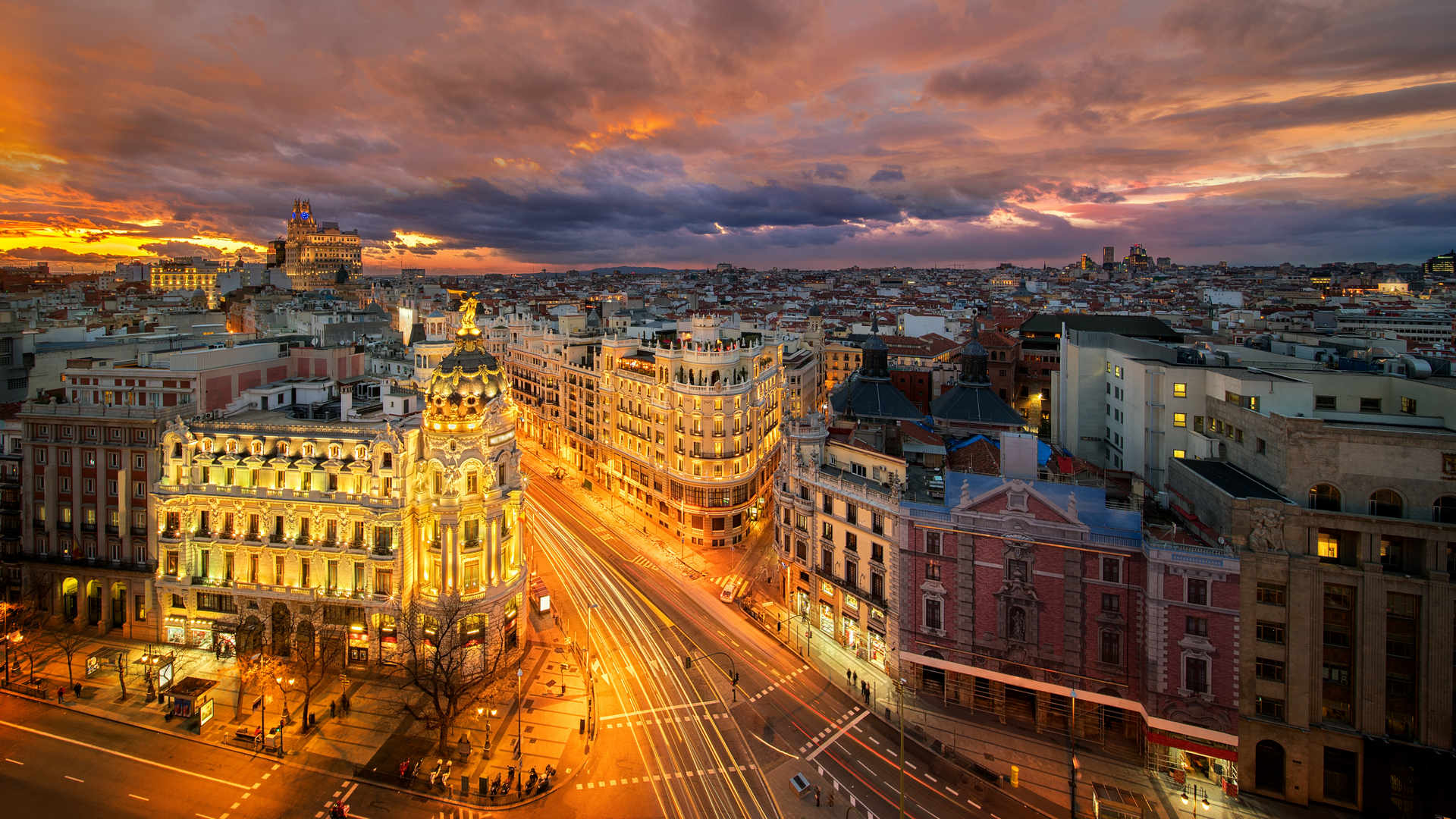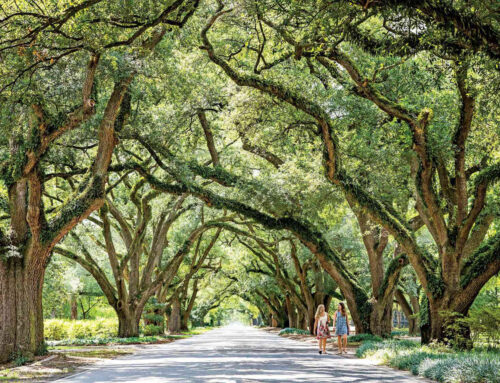By Cathy H. Burroughs, International Travel Writer & Adventure Blogger, journeyPod.com
While staying in Spain’s mysterious and alluring capital city of Madrid, we were invited by the region of Castile and Leon for a series of three thrilling day trips to three important and spectacular historic towns: Avila, Salamanca and Segovia. Madrid’s really exceptional and affordable train system carried us the hour or two to these virtually intact villages and towns. Nestled in the windy and mountainous foothills and on the river confluences or banks of this central region of Castile and Leon,these towns keep this territory’s extraordinary historical impact alive with their expanse of medieval walls, proliferation of architecturally-conserved churches and cathedrals, its renowned University, Roman Aqueduct, Alcazar castle/fortresses and more.
Salamanca
Stunningly beautiful and remarkably stable Salmanca’s Old City, once the hub of Spain’s Golden Age and one of the largest Renaissance cities in Europe,is also a World Heritage Site. Its streets are enlivened with its glowing sandstone buildings, hip and hopping university life and trendy eateries and cafes. Famed for Spain’s oldest and first university, and one of the oldest in the world, students come from all over to study the pure Castilian Spanish language here as well as the liberal arts, law, science and medicine. This highly-esteemed school has held its rigorous standards since 1134 or 1218, depending on your source.
We walked and rode a small train through this fresh and lively town full of youthful promise, breath-taking buildings, flower beds and ambiance with some surprising anachronistic architectural elements. Its bold Cathedral has both frogs and an astronaut chiseled into its intricate front façade, among others. You’ll have to take the tour to solve these questions.
Segovia
Segovia’s former royal palace rises majestically from a rocky out-jutting and is shaped like a bow of a ship with drawbridge and distinctly fairy-tale pointed-spired hats. This majestic Cinderella-like castle, the Alcazar, also a UNESCO World Heritage Site,clearly inspired Walt Disney. Its midtown elevated wonder is its Roman aqueduct with more than 160 arches and its cathedral, one of the last built in the Gothic tradition in all of Europe.
Avila
Called the “town of stones and saints,” Avila at first appears to be an average outlying smallish Spanish town; but as you advance from the train station towards its historically- preserved walled-city you will uncover its awe-inspiring fortifications that circle the rectangularly laid-out city. These walls, built between the 11th and 14th centuries when the city was re-conquered from the Moors, are arguably the most complete, and some say, the finest, walls in all of Europe. The nearly 100 turrets, eleven gates, 2500 merlons, elevated walkways, towers with sweeping views together with its sheer numbers of Romanesque and Gothic churches make it difficult to not be completely overwhelmed.
In a word we found Avila, mesmerizing. We happen to visit during the a packed and rainy Medieval Fair with hundreds of attendees dressed in costumes of the time, roasting pigs, live camels and performances, textiles and displays of pageantry, celebrating this romantic town’s rare and enduring contributions and co-existence of the Christian, Jewish and Muslim cultures.
Famed filmmaker Orson Welles once said that Avila, the capital of the province of the same name with its rolling hills and windy elevation that makes it the highest provincial capital (“closest to heaven” as Spanish writer Camilo Jose Cela said), was the place he would most desire to live, describing it as “strange…and, tragic…..”
Laying on the bank of the Adaja River, Avila is a UNESCO World Heritage Site since 1985. Its evocative depiction was included in the 1965 film “Chimes at Midnight,” and described by writer Jose Marinez Ruiz in his book The Castilian Soul as “perhaps the most 16th-century town in Spain.” Renowned in all of Europe for its spectacular Romanesque medieval walls that, we understand, are lit up to magical results at night and deliver expansive cinematic views for those with the fortitude to walk them. The town is also known for one of the great mystics of all time..
Teresa of Avila
Teresa of Avila or Saint Teresa was a Carmelite nun and one of most powerful and influential female religious leaders of her era. A noblewoman, Teresa was called to a monastic and contemplative life in the 1500’s which has, together with her visions, levitations, raptures, seminal book The Interior Castle and reformation of the ascetic Carmelite Order has hugely affected the mystic tradition in the Catholic Church. There is an elaborate Cathedral with her likeness and intricate and detailed shrines and a library in her honor that will transfix you.
Back to Madrid
Madrid’s exceptional train system made it easy and affordable to get to these compelling locales and back again. As if through a time capsule, we traveled back to the midieval era, sampling the complimentary and delicious tapas (and Avila’s “chuleton” and “yemas” of Saint Teresa) generously shared with our drinks and other fare, supreme hospitality, outstanding tours with impressive guides, courtesy of the region of Castille and Leon and witnessing a panoply of authentic architecture in towns with a rare sense of historic scope. While Madrid languished as a sleepy and inconsequential dusty village, the towns of Avila, Salamanca and Segovia were thriving and making their impact on the collective Spanish psyche. It was not until the 17th century during Spain’s golden age that Madrid began to fulfill its destiny as Spain’s “golden capital.”
Cathy H. Burroughs is an international travel writer and adventure blogger who has published widely and often travels for extensive time periods to Europe and all over the US. One of her well-kept secrets to affordable and lengthy travel is by way of www.homeexchange.com for which she expresses her utmost thanks. Her travels to Spain and Portugal were supported in part by Madrid Destino; the tourism board of the Region of Castile and Leon, the tourism boards of Granada, Spain; Lisbon,Portugal and many others, including in Jerez: three exceptional flamenco shows; the Sandeman noted sherry bodega; the miraculous horse show of the Royal Andalusian School of Equestrian Art and Lisbon, Portugal’s inspiring aquarium Oceanario de Lisboa for which she is most grateful. A huge debt of gratitude goes to the exceptional Soraya Zoudi of the Tourist Office of Spain in Coral Gables, Florida who went above and way beyond. www.journeypod.com
Cathy’s articles have appeared in The New York Times international supplement and been commissioned by The Washington Post and People Magazine and have appeared in The Baltimore Sun, The Washington Times,one of the The New York Times’ international supplements,17th South, Baltimore Magazine, Backstage Magazine, Points North, Atlanta Intown, TheaterWeek, Dance Magazine, High Performance, and many others. She is the travel and adventure blogger for www.journeypod.com, one of the premiere travel sites on-line, and formerly for BOLD Favor Magazine and Aquarius Magazine.
New York Times International Supplement:http://www.ekathimerini.com/232107/article/ekathimerini/life/costas-filippoglous-frogs-a-riotous-take-on-a-time-honored-comedy






